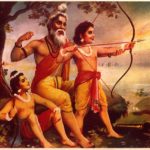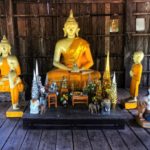The Ramakien Story Summary – Thailand Khon Drama
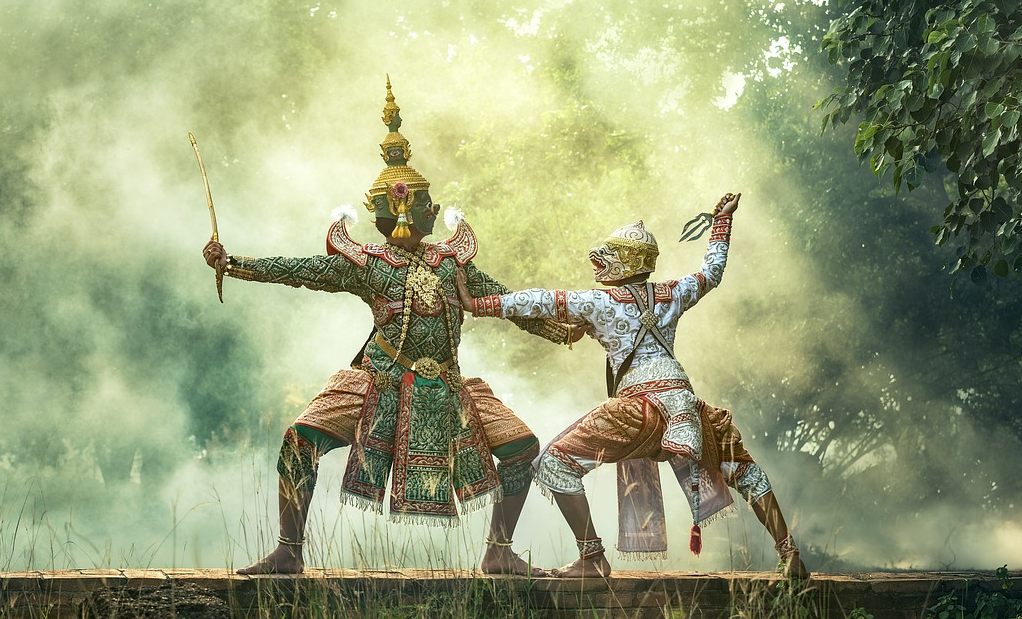
The Ramakien (รามเกียรติ์) is Thailand’s national epic. The story draws inspiration from the Indian Ramayana but weaves into it the fabric of Thai culture, traditions, and beliefs. Its origins trace back to as early as the 13th century, but the story as it exists today rests largely on the work authored in part by King Rama I in 1797, and a subsequent drama for Khon performance written by King Rama II.
The enduring significance of the Ramakien is celebrated through various traditional Thai art forms, including Khon dance and theater performances, as well as sculpture and paintings (such as is seen at Bangkok’s famous Temple of the Emerald Buddha, otherwise known as Wat Pra Kaew).
The Ramakien Story’s Theme
The Ramakien’s central theme is a struggle between Good vs. Evil. In the Thai Buddhist context, we could say it is a struggle between the Dharma and the Darker forces of human nature. The Dharma is represented by the lead character Phra Ram (อโยธยา), who is viewed as an early incarnation of the Lord Buddha. The Darker forces are represented by the ten-headed demon king, Tosakanth (ทศกัณฐ์), who is thought to be an early incarnation of Mara (the demon who tried to thwart the Buddha’s enlightenment).
The Ramakien episodes show the nature of this battle. Even though the evil side is sometimes able to win, in the end, goodness always prevails. The story thus provides an example of the righteous behavior expected of Thailand’s leaders, its military, and its people, as well as the deadly consequences of doing evil.
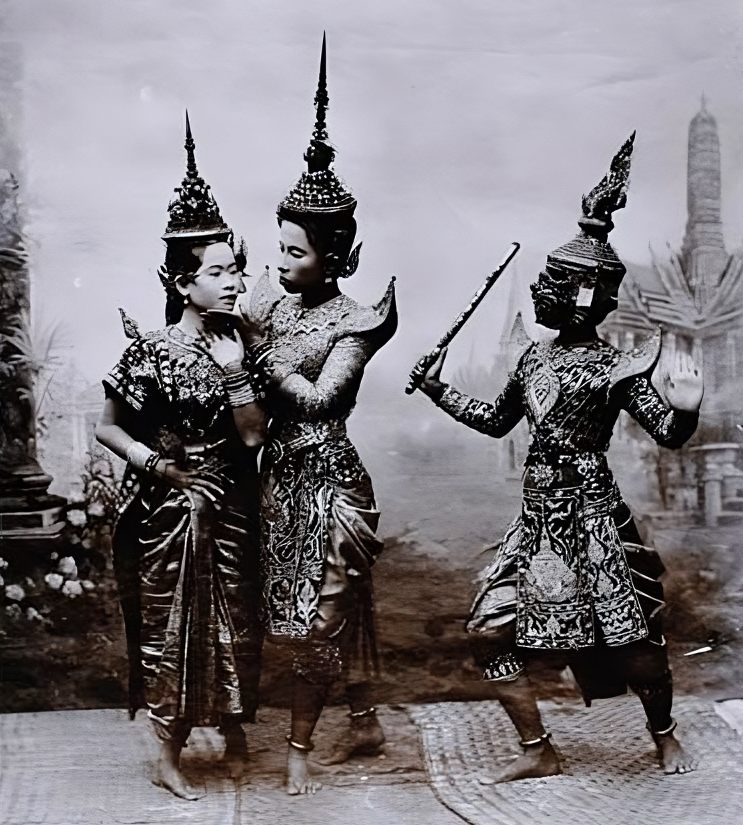
A Ramakien Summary (Important Khon Episodes)
It is impossible to write a brief and easy to understand summary of Thailand’s Ramakien Epic. This is why you won’t find any such summary when searching in Thai or English. There are 117 books to the Ramakien, written in Thai verse that is difficult to understand except by Thai scholars. Few people in Thailand thus ever read the Ramakien, except for academics. Thais’ exposure to the Ramakien is almost exclusively through theater performances, in particular Khon masked dramas, where the story details are not entirely consistent.
Khon is a traditional Thai dance drama that combines intricate choreography, ornate costumes, and elaborate masks. It is known for its historical and mythological themes, especially scenes or episodes from the Ramakien.
For centuries, Khon dramas were primarily performed in the Royal courts in Thailand. But today they are performed countrywide at universities and other special event venues. The performers wear colorful masks representing various characters, and the dances are accompanied by classical Thai music.
Since a quick summary of the Ramakien narrative can’t be done, we are going to provide a summary of 4 important Ramakien episodes which are frequently performed in Khon dance dramas. As mentioned, minor details of these stories often differ. But if you became familiar with these 4 general narratives, you’ll have as much, if not more, knowledge of the Ramakien as most Thai people.
Before we get to our episode synopsis, there is one narrative element to keep in mind, which ties all of these 4 episodes together. That is, the lead character Phra Ram falls in love with the beautiful young lady Nang Sida (นางสีดา). However, after their marriage she is abducted by Tosakanth, and taken to his kingdom in Longka (modern day Sri Lanka).
Phra Ram is assisted in his quest to rescue Nang Sida by his loyal brother, Phra Lak (พระลาก), and an army of devoted monkey warriors, including the semi-divine white monkey general Hanuman (หนุมาน).
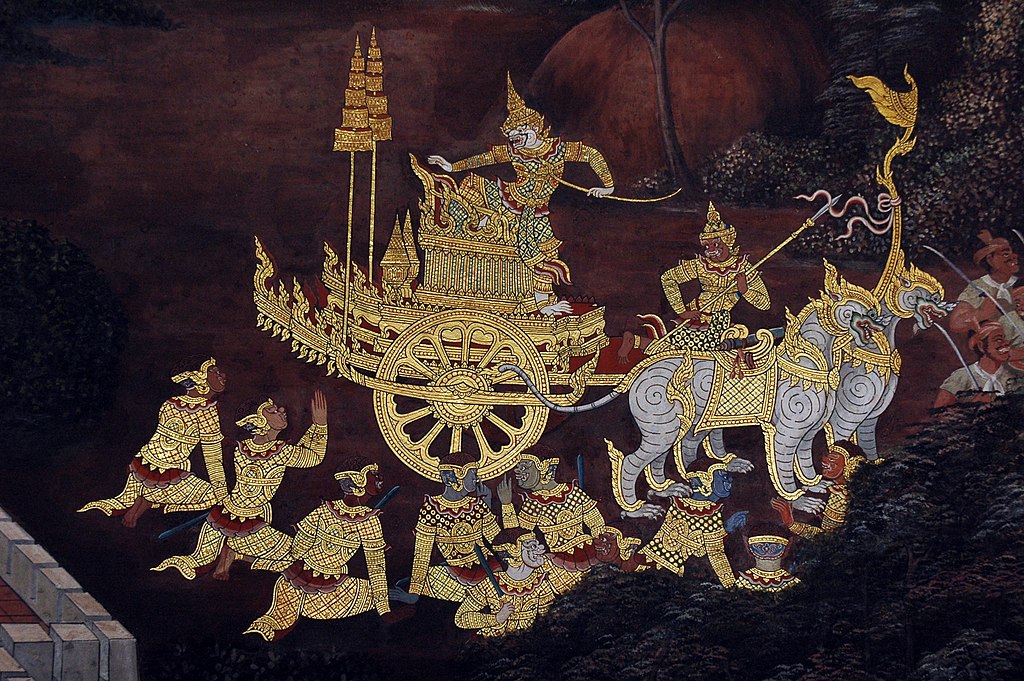
Ramakien Khon Episode: The Building of the Road (จงธานนท์)
Khon Story Summary: Phra Ram convenes a monkey army and proposes a journey across the ocean to reach Longka, an island city, where Nang Sida is being held hostage by Tosakanth. After discussing possible strategies, they decide to place massive stones in the ocean to construct a permanent road to Longka. During the construction, the monkeys get into all kinds of quarrels and tests of strength, slowing the progress.
During one intense quarrel between Hanuman and another large monkey, such a loud commotion is generated that it reaches the pavilion where Phra Ram resides. Phra Ram becomes incensed to learn the two monkeys let their pride get in the way of the road building. He warns Hanuman of dire consequences if the road is not completed in 7 days.
Meanwhile, Tosakanth’s scout notices the monkeys bringing stones to build a road across the ocean. He reports this development to Tosakanth, the King of Longka, who is infuriated by the intrusion of humans and wild monkeys attempting to construct a road. He devises a plan to thwart their efforts by enlisting the help of ocean fish. He tells his son to order all the fish, both large and small, to carry the rocks away from the construction site, thus preventing the road’s completion.
The fish follow the command, and begin carrying away the rocks. The monkeys become confused that no matter how many rocks they throw in the water, the pile never breaks above the surface. Hanuman dives into the ocean and sees a group of fish transporting rocks away. Enraged, he begins killing all the fish. He then captures Tosakanth’s scout who had been spying them, and has the scout order the fish to carry the rocks back and help complete the bridge.
The monkeys and fish quickly work to finish the bridge by Phra Ram’s deadline. Thus completing the Ramakien Khon episode known as the Building of the Road (จงธานนท์).
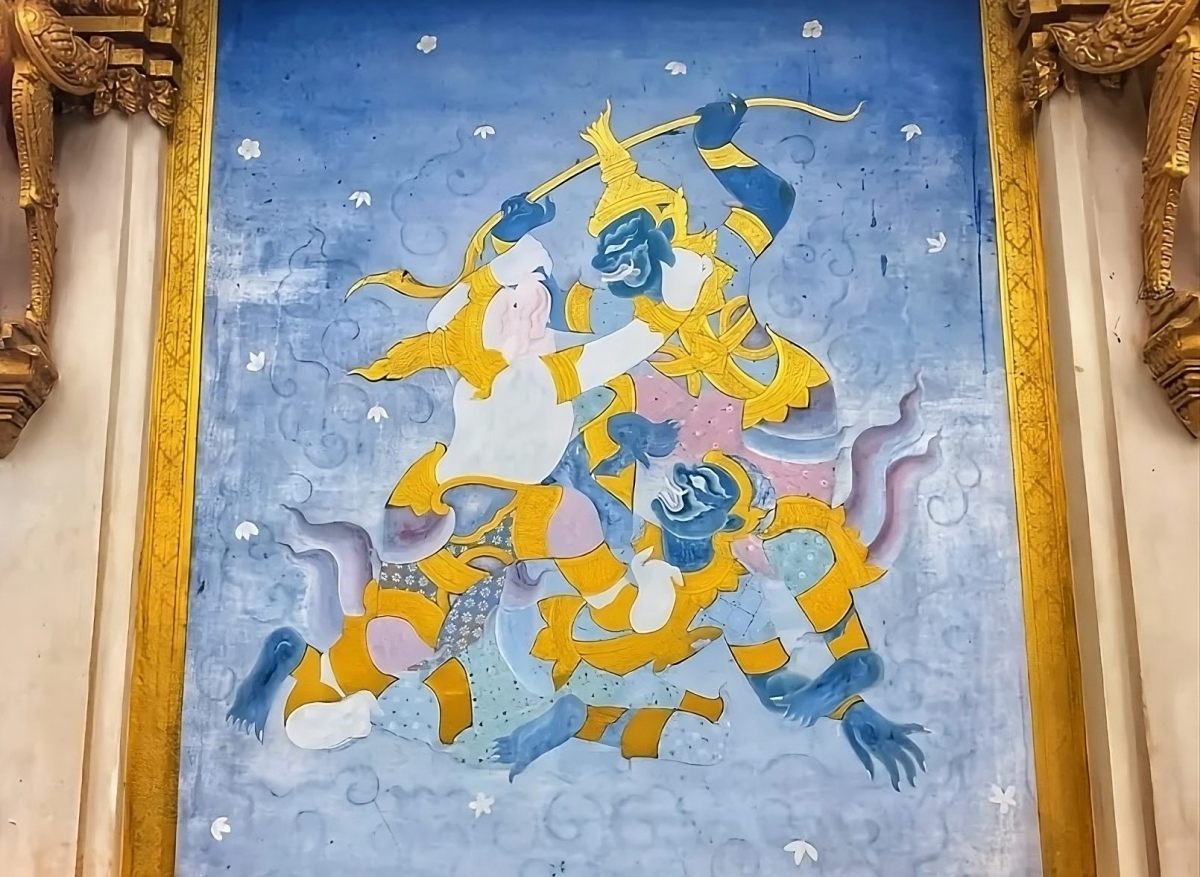
Khon Episode: The Battle of Maiyarap (การต่อสู้ของเมย์ราป)
Khon Story Summary: In this episode of the Ramakien, we meet Maiyarap (เมย์ราป), the ruler of an underwater city. He has a magical powder that can put people to sleep. Prior to facing Phra Ram in battle, Tosakanth orders Maiyarap to assist in the fight against Phra Ram.
Maiyarap has an ominous dream in which a small star shines brightly, eclipsing the moon. An astrologer predicts that a relative of Maiyarap will take control of the city instead of Maiyarap. In response, Maiyarap devises a plan to prevent this prophecy from coming true by capturing his relative and relative’s mother, and imprisoning them.
Meanwhile, Phra Ram has a dream in which the mythological figure Rahu is eating the sun. An astrologer named Phiphek (who is the estranged brother of Tosakanth) predicts that Phra Ram will be kidnapped but ultimately return unharmed — that when the sun rises, Phra Ram will be free from misfortune.
Hanuman, determined to protect Phra Ram, attempts to enlarge his own body to encircle the pavilion where Phra Ram is living. However, Maiyarap, disguised as a monkey soldier, discovers this secret. He takes flight into the air and, wielding a telescopic device, causes it to emit a brilliant light. The monkey soldiers who are on guard mistake this light for morning and neglect their duties.
Seizing this opportunity, Maiyarap infiltrates the area and casts a spell on Phra Ram and his soldiers, causing them all to fall asleep. He then carries Phra Ram away to his underworld city. He imprisons Phra Ram in an iron cage and takes him to a palm grove at the deepest part of the city. Maiyara then orders one million giant soldiers to tightly guard the cage.
Upon learning of Phra Ram’s abduction, Hanuman sets out to rescue him from the underwater city. Along the way, Hanuman encounters numerous challenges, including stone walls guarded by thousands of giants and fiery mountain passes. He even encounters enormous mosquitoes. Despite facing these obstacles, Hanuman perseveres and makes is way to the city.
As he gets close to the city, he reaches a checkpoint manned by Machanu, the adopted son of Maiyarap. Machanu avoids giving Hanuman the directions, but the great white monkey is able to surreptitiously follow Machanu back to the general area. He then is able to find the entrance to the city with the help of a servant girl who had been out fetching water.
Inside the city, Hanuman locates Phra Ram and casts a sleep spell on the giant guards, rendering them all unconscious. He frees Phra Ram from captivity and takes him to a safe place to recover. Hanuman then returns to confront Maiyarap and kills him. This episode of the Ramakien is very popular among Khon drama performance in Thailand.
Phra Ram Defeats Tosakanth (พระรามรบทศกัณฐ์)
Khon Story Summary: Phra Ram wages war with Tosakanth for many years, until all Tosakanth’s relatives die in the war. Phra Ram strikes Tosakanth with many arrows but he doesn’t die, because the demon king entrusted his heart to a hermit monk who protects it in a special box.
Hanuman tricks Tosakanth into believing that he is his faithful servant. After this is accomplished, he convinces the hermit monk to extract the heart box from its sacred location. Hanuman switches the box with a fake box, and quickly flies away to safeguard the true heart box in another location.
Tosakanth is still a little suspicious of Hanuman’s faithfulness to him. So, Hanuman pretends to volunteer to confront Phra Ram and his brother Phra Lak, and to capture Tosakanth’s estranged brother Phipek.
Hanuman and his forces attack Phra Lak’s forces until they appeared defeated. He thus once again earns Tosakanth’s trust. However, Phra Lak misunderstands Hanuman’s actions. He thinks that Hanuman has allied with Tosakanth. He goes to inform Phra Ram, who also suspects Hanuman of duplicity.
Phra Ram, after assembling his army alongside Phra Lak’s, decides to observe Hanuman’s behavior a little more before taking further action. Meanwhile, Tosakanth issues orders to prepare the city for the impending battle.
On the following day, Hanuman requests that Tosakanth lead his own army, while he will fight on his own. Upon reaching the battlefield, Hanuman instructs Tosakanth to organize his forces. As Hanuman soars high preparing to attack Phra Ram’s army, he suddenly offers Phra Ram the heart box and tells him to hurry and kill Tosakanth.
Hanuman then flies back to show Tosakanth that he now has the heart box. Tosakanth acknowledges Hanuman’s deception and tells him that he will gather his forces to battle Phra Ram the following day. The next day they meet and battle, but now that Phra Ram is in possession of the heart box, his arrows penetrate Tosakanth’s chest, killing him.
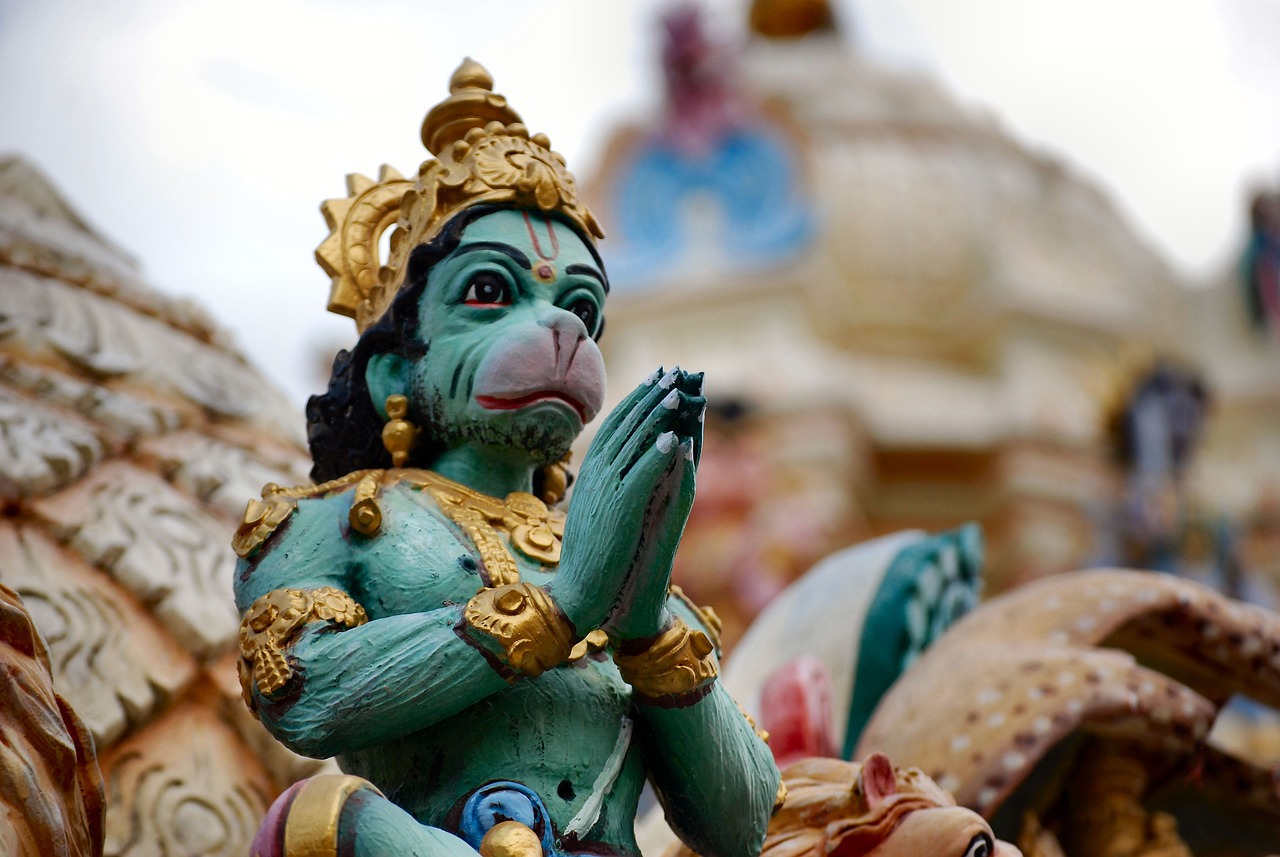
Ramakien: Nang Sida Walks Through Fire (นางสีดาเดินผ่านไฟ)
Khon Story Summary: After Phra Ram successfully defeats Tosakanth in battle, he is overjoyed to be reunited with Nang Sida. However, he can’t help but question her faithfulness during her long captivity with Tosakanth. Sida assures Phra Ram that she endured great hardships and disgrace every single day.
To prove her purity, Nang Sida proposes a test. She requests that Phra Ram summon the gods and fire deities as witnesses to confirm her innocence. She is willing to undergo a trial by fire to demonstrate her purity. Phra Ram is deeply moved by Nang Sida’s steadfast determination to undergo such a test and agrees to arrange it.
Phra Ram promptly shoots an arrow into the sky, calling upon a gathering of gods and celestial beings. They look down and see that Nang Sida is about to undertake the fire-walking trial. Indra swiftly descends to the location of the ceremony, accompanied by the angels. Phra Ram, delighted to see this, instructs the bon fire to be built. Monkeys are ordered to gather firewood and pile it up. Phra Ram then shoots an arrow that blazes like the sun’s rays, igniting the fire.
Observing the radiant flames, Nang Sida humbly bows to Phra Ram and makes a solemn vow before the gods. She pledges that if she were not as pure as she claimed, the fire will consume her life. If her innocence holds true, she prays for her safety.
As Nang Sida walks through the fire, her truth and purity are affirmed. She is miraculously untouched by the flames, supported by a divine lotus at every step of her journey through the fire. Indra blows his conch and declares Sida’s purity, as she emerges unscathed from the fire. Nang Sida pays her respects to Phra Ram and Indra in front of the pavilion. Convinced of Sida’s purity, Phra Ram invites her to sit on the royal throne within the pavilion.
There is a lesser known episode that follows the ending of this scene which you can read about here: Ramakien Love Story.
How the Ramakien Reflects Thai Culture
The Ramakien story illustrates the cultural and spiritual ideals that are deeply ingrained in Thai society. These include:
Respect for Spiritual Traditions: Thai culture places great importance on spiritual traditions and heritage. The Ramakien, as a re-imagined version of the Indian Ramayana, illustrates the Thai reverence for classic Hindu and Buddhist tales, and the incorporation of these stores into their own cultural context.
Dharma and Righteousness: The character of Phra Ram exemplifies the concept of dharma, which signifies righteousness, moral duty, and ethical behavior. His unwavering commitment to upholding dharma throughout his trials and challenges serves as a model all individuals (especially leaders) to follow in their own lives.
Family and Loyalty: The epic underscores the importance of family bonds and loyalty. Phra Ram’s deep love for Nang Sida, his loyal brother Phra Lak, and his determination to rescue Nang Sida emphasize the significance of family ties in Thai culture.
Courage and Heroism: The Ramakien extols the virtues of bravery and heroism, particularly through the character of Phra Ram and Hanuman. Their willingness to confront daunting challenges and face formidable adversaries showcases the Thai admiration for acts of valor.
Devotion and Sacrifice: Hanuman’s unwavering devotion to Phra Ram and his willingness to make personal sacrifices for the greater good resonate with Thai spiritual values. His selflessness and commitment to the mission underscore the importance of devotion and sacrifice.
The Consequences of Karma: Thai Buddhism, a dominant spiritual belief in Thailand, incorporates the concepts of karma (the law of cause and effect). These concepts are subtly reflected in the epic, reminding individuals of the consequences of their actions in this life and the next.
Unity and Cooperation: The Ramakien emphasizes the importance of unity and cooperation in the face of adversity. Phra Ram’s ability to form alliances with various beings, including monkeys and bears, underscores the idea that collective efforts can overcome even the most formidable challenges.
Respect for Nature: The reverence for nature and the animal kingdom, exemplified by Hanuman’s ability to communicate with animals, aligns with Thai cultural values that emphasize harmony with the natural world.
Purity and Moral Integrity: The epic highlights the importance of purity and moral integrity, particularly in the character of Nang Sida, whose unwavering loyalty and chastity are tested and reaffirmed through her trials.
- Affirmations in Buddhism & Thailand - June 7, 2025
- Speak Thai Naturally Without the Gymnastics - April 20, 2025
- The Best Learn Thai Podcast and YouTube Channel - April 10, 2025

